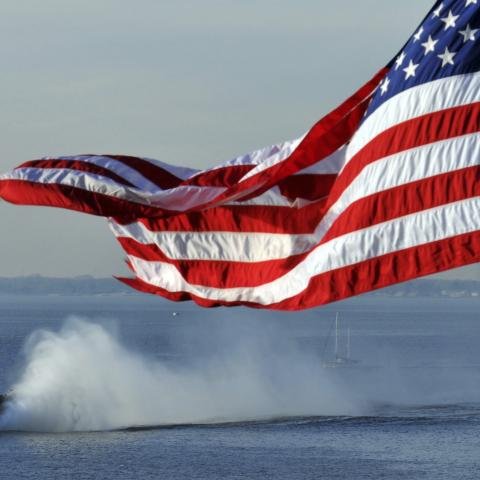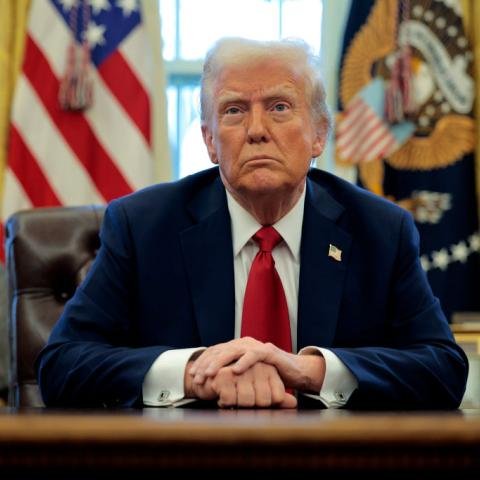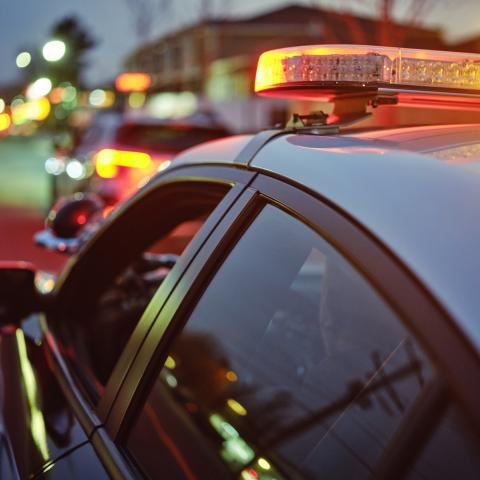
Following multiple cultural movements across the country that resulted in flag stomping and burning, President Trump signed an executive order on Monday protecting America’s most iconic and recognizable symbol: the American flag.
“Our great American flag is the most sacred and cherished symbol of the United States of America, and of American freedom, identity and strength,” the order states. Trump has a demonstrable affection for Old Glory. He has been photographed many times hugging the American flag, even kissing it, dating back to his first campaign. In June, he purchased and installed two large American flags on the White House property, one each on the south and north lawns.
Texas Attorney General Ken Paxton spoke to Just The News about the order: “He loves this country. He’s built his businesses here. His family’s done really well in this country. He knows the stakes that we’re in, protecting this country, and so, we’ve had men and women die for, you know, centuries to protect that flag and that freedom that flag represents. And I think you can see, you can see it when he talks about it. He believes in that.”
Context is everything
The executive order instructs the Attorney General to aggressively pursue legal action against flag burning when it “incites violence or violates laws, such as disturbing the peace,” and imposes one-year of imprisonment without early release and permitting visa cancellation or deportation for foreign nationals who deface the flag under certain circumstances.
Flag burnings have increased during major protests in the last decade. In August 2024, pro-Palestinian protesters burned an American flag outside the Democratic National Convention. In June 2020, in Portland, Oregon, demonstrators burned a U.S. flag after toppling a George Washington statue, and defaced flags with graffiti tied to racial justice during the George Floyd riots. In 2024, in Washington, D.C., pro-Palestine activists burned flags to protest U.S. policy in the Israel-Hamas conflict.
The Supreme Court ruled in 1989 in a 5-4 decision, that flag burning is protected as free-speech under the First Amendment in the landmark case Texas v. Johnson and reaffirmed in the Supreme Court case United States v. Eichman in 1990.
However, interpreting flag-burning as free speech continues to be called into question. The executive order does not make the act of burning the flag illegal in itself. A person could burn a U.S. flag in their own backyard and not run afoul of the law. But the circumstances in which flag-burning occurs — namely, incitement to violence — is the likely turning point for challenges to implementing the law.
Clear and present danger
A 1949 Supreme Court case, Terminello v. Chicago is particularly instructive. There, Arthur Terminiello, an anti-communist speaker, gave a speech in Chicago that offended various racial and political groups, including a hostile crowd that had gathered outside the auditorium to protest. The crowd reacted by throwing bottles and rocks, leading to riots, and Chicago police arrested Terminello because his speech allegedly incited unrest. The Supreme Court reversed his criminal conviction, holding that speech can only be restricted when it incites a “clear and present danger of immediate violence or substantial disorder,” not simply when it provokes controversy or anger. Where that line is drawn is not easily ascertainable.
Paxton believes that the Supreme Court did not get it right in Texas v. Johnson. “The reality is, the Supreme Court can change their mind.” History bears out Paxton’s point.
The court’s long history is dotted with rulings that would shock the conscience today, but were eventually reversed. In 1927’s Buck v. Bell, the Supreme Court upheld the constitutionality of Virginia’s forced sterilization law, allowing the state to sterilize individuals deemed “unfit” to reproduce. Perhaps the most notorious example of the Supreme Court “getting it wrong” was Dred Scott v. Sandford, where, in 1857, the court ruled that slaves were not citizens of the United States and, therefore, could expect no protection from the federal government or the courts, and that Congress had no authority to ban slavery from a Federal territory. That ruling was legislatively overturned with the enactment of the 13th and 14th Amendments to the Constitution.
Citing the 1973 Supreme Court case Roe v. Wade as an example, Paxton said, “I think public sentiment was so involved in changing the minds of some of these justices. We have a completely different court that may have a different opinion on at least the scope of when you can burn a flag. Maybe there are some limitations, like if you’re inciting violence. All I’m saying is there have been plenty of cases they haven’t gotten right the first time that they have been undone in the future.”
Although pundits on both sides of the aisle may generate noise about the order, it may in fact never reach the Supreme Court. Executive Orders, unlike laws passed by Congress, can be undone by a future president with the mere stroke of a pen. Given the length of time such cases take to wend through the legal system, a decisive argument may very well be moot.




